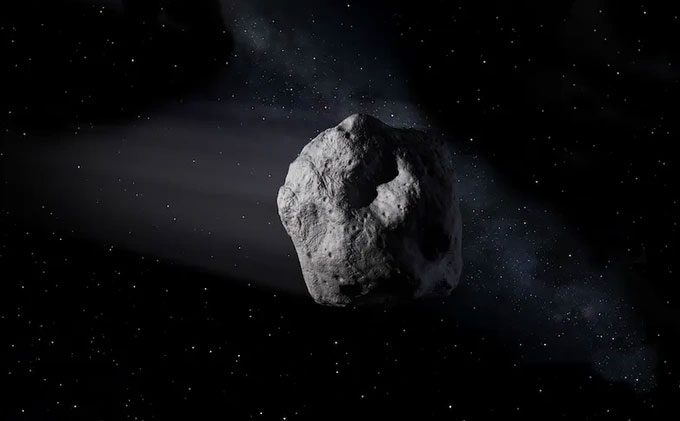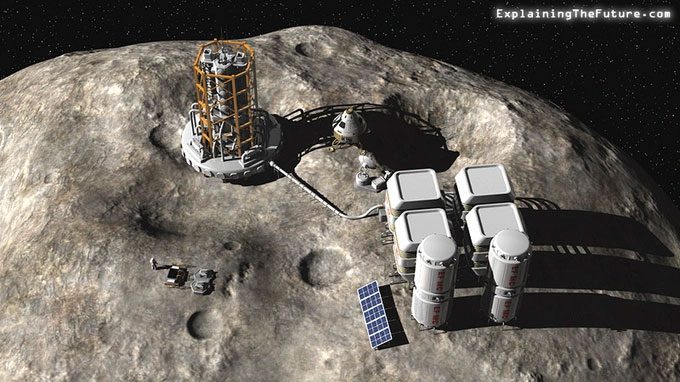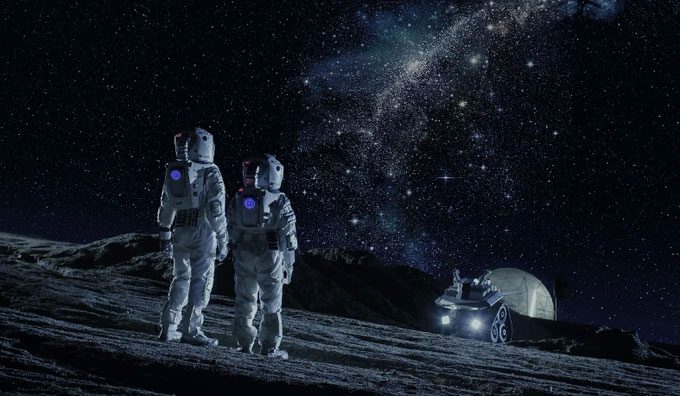The Basic Idea of Transforming an Asteroid into a Space Habitat Could Soon Become Reality?
In science fiction films, the concept of building bases on asteroids or even mobile space stations has always captured the imagination of viewers.

Asteroid Atira. (Photo: Getty).
However, with advancements in science and technology, this concept is no longer just a fantasy; it may soon become a reality.
Recently, Dr. David W. Jensen, a retired engineer from Rockwell Collins, a multinational aerospace services company, published a 65-page document related to this topic.
In this document, Dr. Jensen elaborated on a clear and relatively feasible plan to transform an asteroid into a space habitat.
According to Dr. Jensen, the first step is to choose which asteroid will be the most promising candidate. Factors such as the asteroid’s composition, distance from Earth, and overall size must be considered.
After extensive research, Dr. Jensen selected Atira as his study subject. This is a type S asteroid with a diameter of approximately 4.8 km, and it even has its own moon orbiting around it.

Concept of a space station. (Photo: ETF).
Although it is not the closest asteroid, with an approach distance of 80 times that of the Moon, it lies in a stable orbit known as the “Goldilocks Zone” of the Solar System.
Here, the temperature inside and on the surface of the asteroid is relatively stable, allowing us to create a habitat without significant alterations.
Another crucial factor is the asteroid’s gravity. According to Dr. Jensen, the low gravity conditions on Atira could have adverse effects on the living environment if prolonged.
Therefore, it is necessary to create artificial gravity on the asteroid. This factor can be determined by centripetal force, which arises when the asteroid rotates around itself.
Another important consideration is manpower. Clearly, all efforts would be in vain if we are unable to send humans and life to this asteroid to take the first steps.
However, Dr. Jensen’s answer may surprise us, as he believes that self-replicating robots could be the solution to everything.

Humans will soon venture into space and achieve remarkable accomplishments. (Photo: Shutterstock).
He emphasizes the importance of sending the most advanced technical components from Earth and using materials from the asteroid itself to manufacture everything else, from rock crushers to solar panels.
Dr. Jensen suggests that current technology can easily “package” a capsule on a spacecraft containing about four spider-like robots.
This capsule would act like seeds. While the aforementioned robots would be the first workforce to set foot on the asteroid, they would then build a base and create approximately 3,000 similar robots.
The result of this entire process would be a space habitat ready for humans, providing 1 billion square meters of previously non-existent land.
Notably, the feasibility of the plan is striking. According to Dr. Jensen’s detailed statistics, the program would only cost about 4.1 billion USD, much less than the 93 billion USD spent by NASA on the Apollo program.
If everything goes smoothly, Dr. Jensen estimates that the entire project could be completed in about 12 years.


















































